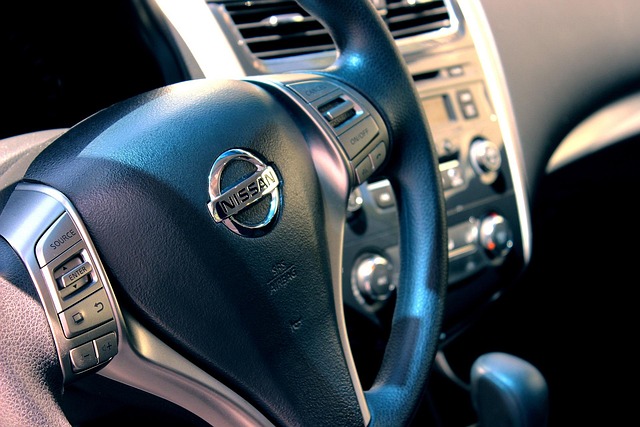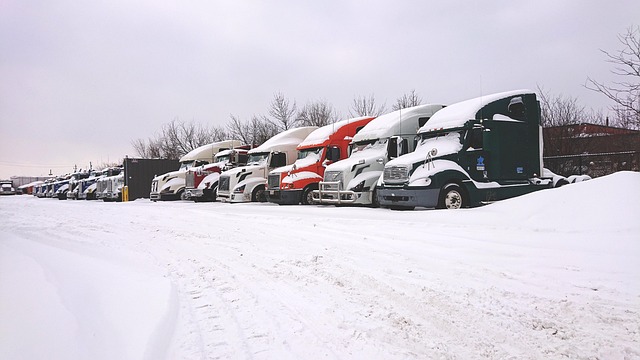Registering a car in California involves understanding key requirements, gathering essential documents, and ensuring your vehicle’s VIN is accurate. This step-by-step guide walks you through the process, from verifying your Vehicle Identification Number (VIN) with a reliable verifier to selecting an approved registration location. By following these instructions, you’ll ensure a smooth transition for your California car registration.
- Understand California Car Registration Requirements
- Gather Necessary Documents for Car Registration
- Verify Vehicle Identification Number (VIN) Accuracy
- Choose an Approved Car Registration Location
- Complete and Submit the Car Registration Application
Understand California Car Registration Requirements

Before registering your car in California, it’s crucial to understand the state’s specific requirements. One key aspect is ensuring your vehicle’s VIN (Vehicle Identification Number) is accurately verified. This process, often facilitated by a mobile VIN verifier or mobile VIN inspection service, confirms the vehicle’s make, model, year, and other critical details match those on record with the manufacturer.
In California, this verification is typically done through the Department of Motor Vehicles (DMV). They require you to present proof of identity, proof of insurance, and a completed application form. Additionally, your vehicle must pass an emissions test in most cases. A mobile VIN verifier can be particularly useful during this process by streamlining the initial verification step, making it easier for both owners and DMV personnel to confirm the vehicle’s authenticity before registration proceeds.
Gather Necessary Documents for Car Registration

Before you begin the car registration process in California, make sure to gather all the essential documents required. One crucial piece is the Vehicle Identification Number (VIN) verification. This can be done through a mobile VIN verifier or by checking the vehicle’s paperwork. The VIN inspection ensures that your car matches the information on record, which is vital for a successful registration.
Along with the VIN details, you’ll need proof of ownership, typically a title document, and valid identification such as a driver’s license. It’s recommended to check with the California Department of Motor Vehicles (DMV) for an exhaustive list of required documents, as they may have specific guidelines based on your vehicle’s age and condition.
Verify Vehicle Identification Number (VIN) Accuracy

Before you begin the registration process, it’s crucial to ensure your vehicle’s Identification Number (VIN) is accurate and valid. The VIN is a unique code that identifies your car, so any errors could lead to delays or issues further down the line. You can verify the VIN using several methods, including an online vin verifier service or by checking the vehicle’s certification documents.
A mobile vin verification process is also available, where you can use a specialized app or service to cross-reference the VIN with official databases. This ensures that your car matches the records and helps prevent any fraudulent activities. It’s always best to double-check these details before proceeding with registration, as an incorrect VIN could cause problems when trying to register your vehicle in California.
Choose an Approved Car Registration Location

When registering your car in California, it’s crucial to choose an approved location for this administrative task. The state offers several options, including DMV field offices and certain auto shops or service centers that are authorized by the Department of Motor Vehicles (DMV). These locations are equipped to handle vehicle registration, ensuring a straightforward process.
One valuable tool to facilitate this process is a vin verifier, which can be used for a mobile vin inspection or mobile vin verification. This technology allows you to check your car’s history and ensure it meets all legal requirements before registration. Opting for a mobile vin verifier service can save you time by offering convenience, especially if you’re unable to visit a physical location.
Complete and Submit the Car Registration Application

To begin the registration process, you’ll need to complete and submit the Car Registration Application. This form requires essential details about your vehicle, including its make, model, year, and unique Vehicle Identification Number (VIN). A VIN verifier or scanner is a useful tool, especially when using a mobile vin verification service, as it can swiftly capture this critical information from your car’s inspection sticker or registration documents.
Once you’ve gathered the necessary data, fill out the application accurately. Ensure that all details match those on your vehicle’s title and identification documents. After completion, submit the form to the California Department of Motor Vehicles (DMV) along with any required fees. The DMV will then process your application, conduct a vin inspection if needed, and issue a registration certificate for your car.
Registering your car in California is a straightforward process once you understand the requirements and have the necessary documents. By ensuring your Vehicle Identification Number (VIN) is accurate, choosing an approved registration location, and completing the application diligently, you can efficiently navigate the registration process. Remember to use a reliable VIN verifier to maintain the integrity of your vehicle’s information, making it a smooth and successful experience from start to finish.
